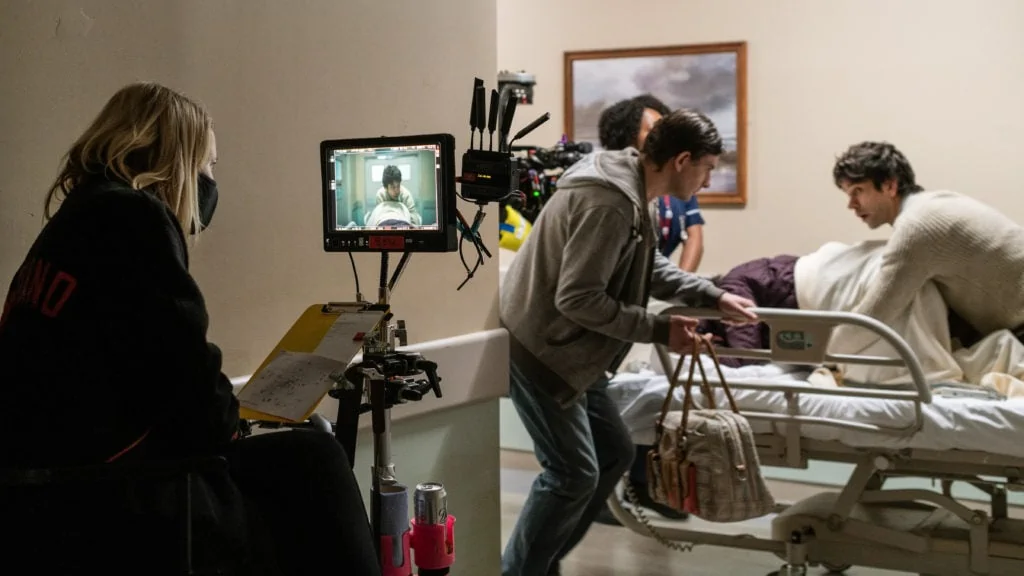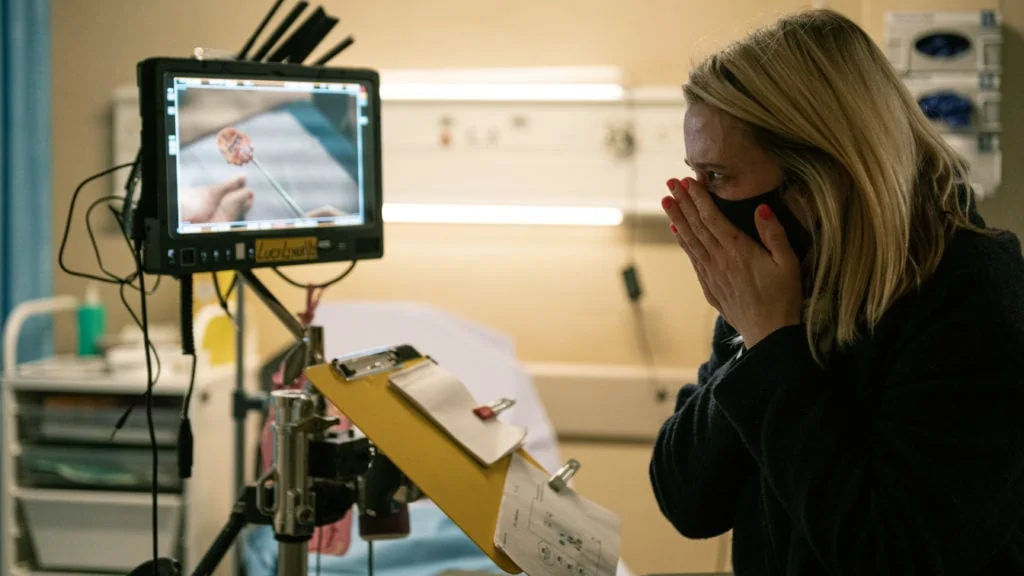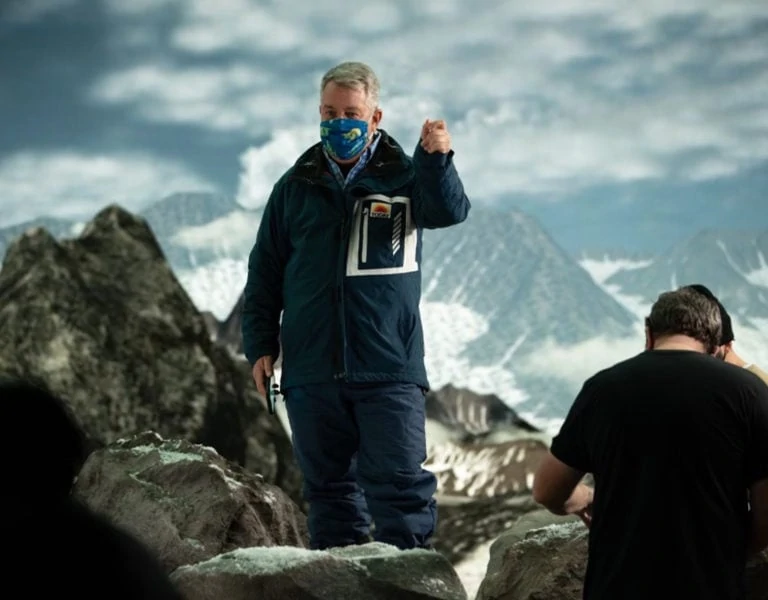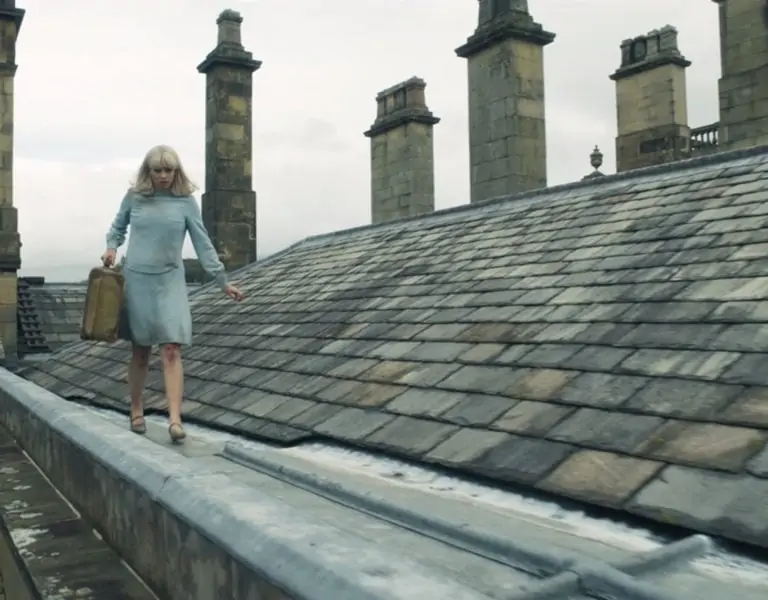HEART OF THE ACTION
At times hilarious, at times devastating, seven-part series This Is Going to Hurt follows Adam (played by Ben Whishaw), a junior doctor as he wends his way through the ranks of hospital hierarchy. Based on Adam Kay’s award-winning international multi-million selling memoir of the same name, the series is produced by SISTER (Landscapers, Chernobyl) in Association with Terrible Productions.
Emmy-nominated cinematographer Benedict Spence (The End of the F***ing World, In My Skin) created the look for the series, shooting episodes one to four. “Lead director Lucy Forbes and I aimed to create something which was intimate and immediate, but also crafted. A sort of “controlled naturalism”,” says Spence.
“It’s not just the wide-lens handheld style which creates this intimacy, it’s also the way we shoot and cover scenes. We’d rarely shoot a wide shot of a scene; instead, our coverage starts with a single on Ben Whishaw. The camera will follow Ben throughout the scene, often going in and out of rooms, as if the camera was his best friend. The rest of the coverage is seen over his shoulder, placing the audience right in his shoes.”
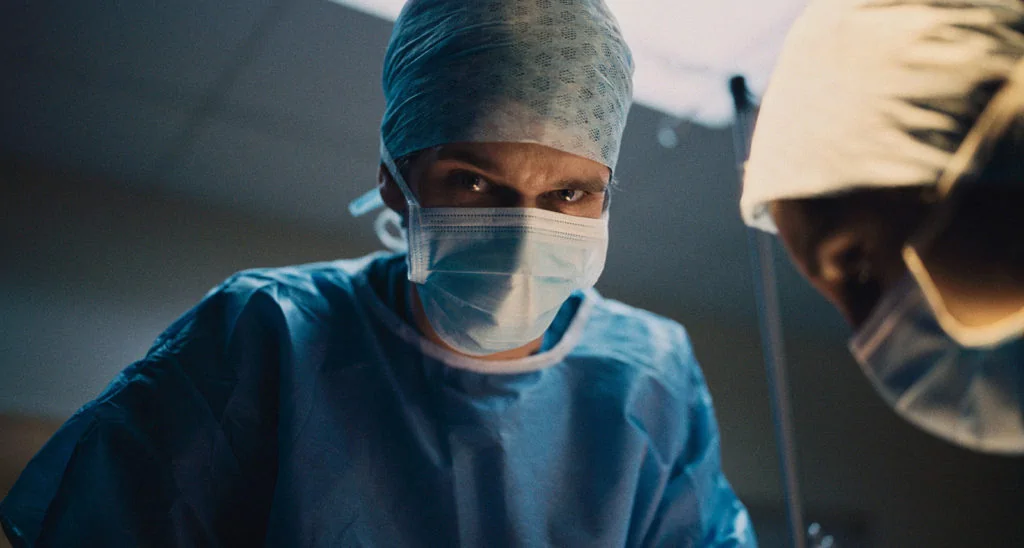
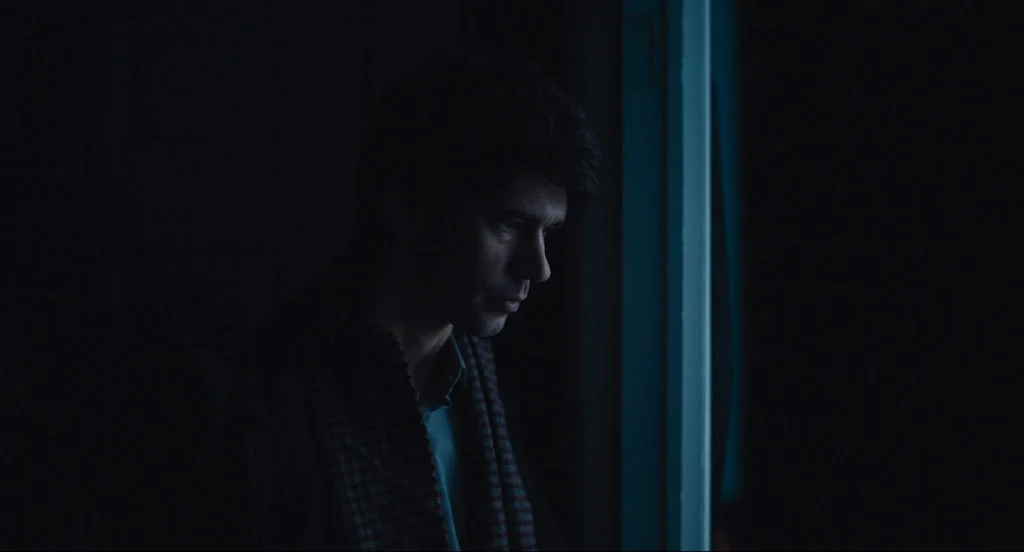
The hospital was lit by around 250 Astera Titan tubes built into the set. “All of these were sent back to a lighting desk, I could call out over walkie talkie exactly the brightness and colour I needed, and our op could instantly make adjustments to them,” says Spence. “It was a big cost on a show with a relatively small budget, but it allowed us huge flexibility in crafting the look shot-by-shot and meant we could achieve some tricky technical moments.”
Having chosen to shoot on the ARRI Alexa Mini LF, and after much testing, Spence and colourist Toby Tomkins from Cheat decided to rate the camera at 2000 ISO, embracing the grain the sensor produced, but also allowing the DP to hold the highlights in the overhead fluorescents.
“We would regularly put the camera into ‘Backpack mode’, removing all batteries, video transmitters or anything extraneous to the camera, placing that all on a backpack and making the camera not much more than a sensor and a lens” says Spence. “This allowed us to be extremely handheld, moving the camera nimbly and free of my shoulder. The second block DP was Nick Cooke, who did a fantastic job continuing the story for episodes five, six, and seven. He kept the overall house style but brought a lot of his own style into it too.”
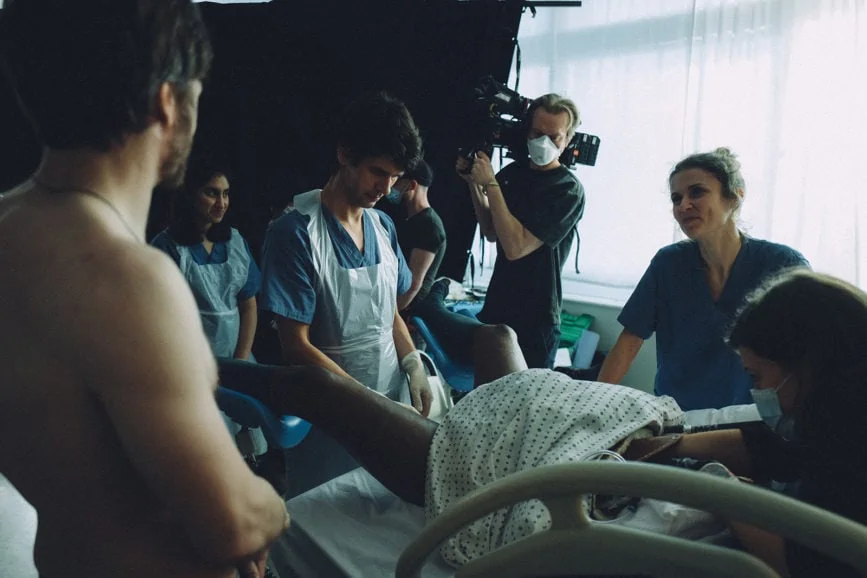
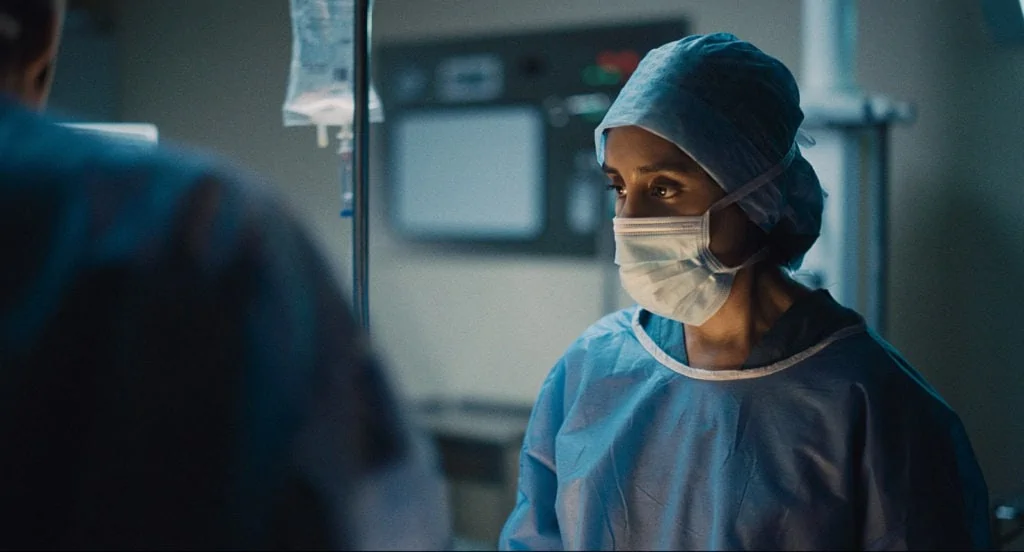
Spence worked closely with Tomkins to set the look for the series, striving to present an authentic and visceral representation of a tired NHS. During look development, the team went to great lengths to ensure the quality of the finish survived broadcast and online compression by working closely with the BBC engineering department to test the effect of transmission and iPlayer compression.
SDR was chosen over HDR to fit the creative vision for the show and meant a more legacy film approach to creating the look could be adopted, establishing the show as not present day with some vintage flair. Tomkins was able to use film print emulation without having to adapt to HDR.
Tomkins and Spence reunited with lead director Lucy Forbes for the series, having previously collaborated on BAFTA-winning and Emmy-nominated season to of The End of the F***ing World. “I was briefed to build a look with the tests Benedict did in pre-production and already knowing what he and Lucy like combined with an emotional brief and some visual references made it straightforward and very enjoyable” says Tomkins.
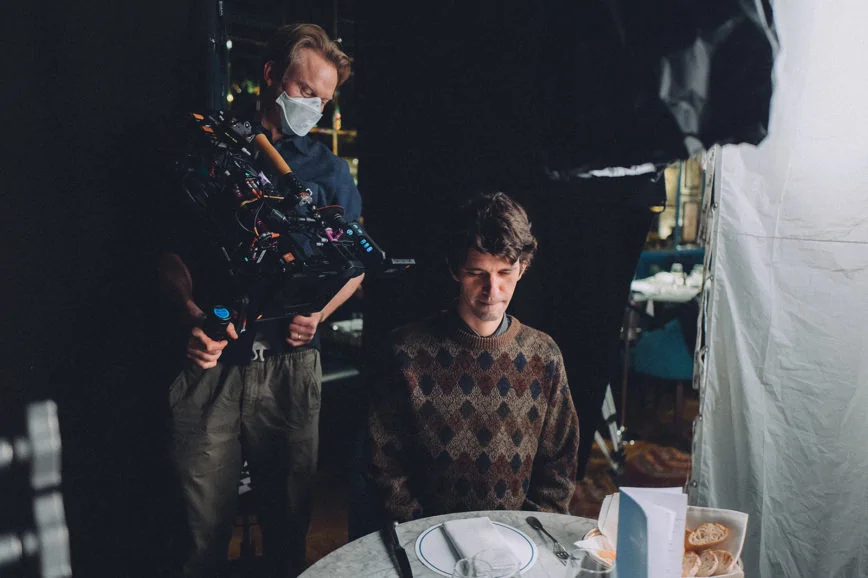
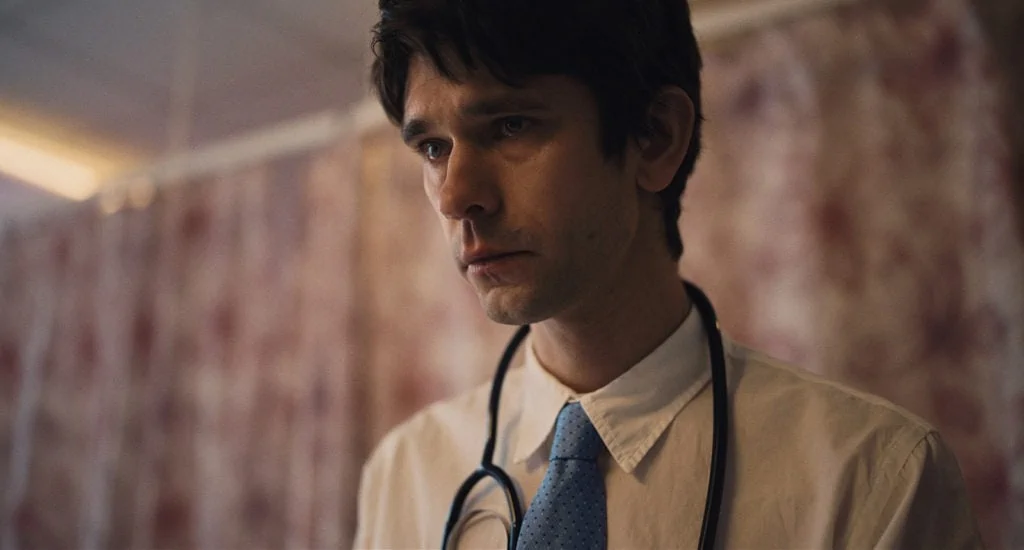
“COVID or schedule restrictions made occasional remote work necessary during the grade, with Lucy looking at exports and giving feedback that way. The ultimate goal for any colourist is to have a level of dependability where we can be left alone and trusted that our decisions are broadly right for the vision of the director and DP. It was a fantastic series to work on and very humbling to reflect on the NHS and the amazing dedication and hard work put in by the staff.”
Spence adds: “From the beginning, Lucy and I knew that Toby would be our choice for colourist. We knew he would be integral to designing the finish of the show. Not only does he have incredible technical knowledge, he also really understands character and how colour and contrast can work with performance on screen. One of my favourite things Toby created for This Is Going to Hurt was the remjet-removal emulation. It might feel like a very small thing, but it brings an immediacy and timelessness to the image, and it’s something I’ve not seen on digitally captured television before.”
